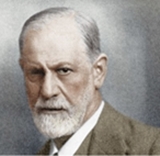Spacecraft 'Nuclear Batteries' Could Get a Boost from New Materials
ex-iskon-pleme :: Društvo :: Znanost
Page 1 of 1
 Spacecraft 'Nuclear Batteries' Could Get a Boost from New Materials
Spacecraft 'Nuclear Batteries' Could Get a Boost from New Materials
Spacecraft 'Nuclear Batteries' Could Get a Boost from New Materials
http://www.jpl.nasa.gov/news/news.php?feature=6646
http://www.jpl.nasa.gov/news/news.php?feature=6646

Eroo- Posts : 79056
2016-07-22
 Re: Spacecraft 'Nuclear Batteries' Could Get a Boost from New Materials
Re: Spacecraft 'Nuclear Batteries' Could Get a Boost from New Materials
Earth-based applications of skutterudite
There are many potential applications for these advanced thermoelectric materials here on Earth.
"In situations where waste heat is emitted, skutterudite materials could be used to improve efficiency and convert that heat into useful electricity," said Thierry Caillat, project leader for the technology maturation project at JPL.
For example, exhaust heat from a car could be converted into electricity and fed back into the vehicle, which could be used to charge batteries and reduce fuel use. Industrial processes that require high temperatures, such as ceramic and glass processing, could also use skutterudite materials to make use of waste heat. In 2015, JPL licensed patents on these high-temperature thermoelectric materials to a company called Evident Technologies, Troy, New York.
"Over the last 20 years, the field of thermoelectrics has come into being and blossomed, especially at JPL," said Fleurial. "There's a lot of great science happening in this area. We're excited to explore the idea of taking these materials to space, and benefitting U.S. industry along the way."
JPL's work to develop higher-efficiency thermoelectric materials is carried out in partnership with the U.S. Department of Energy (DOE), Teledyne Energy Systems and Aerojet Rocketdyne, and is funded by NASA's Radioisotope Power System program, which is managed by NASA Glenn Research Center in Cleveland. The spaceflight hardware is produced by Teledyne Energy Systems and Aerojet Rocketdyne under a contract held by the DOE, which fuels, completes final assembly and owns the end item. Caltech manages JPL for NASA.
There are many potential applications for these advanced thermoelectric materials here on Earth.
"In situations where waste heat is emitted, skutterudite materials could be used to improve efficiency and convert that heat into useful electricity," said Thierry Caillat, project leader for the technology maturation project at JPL.
For example, exhaust heat from a car could be converted into electricity and fed back into the vehicle, which could be used to charge batteries and reduce fuel use. Industrial processes that require high temperatures, such as ceramic and glass processing, could also use skutterudite materials to make use of waste heat. In 2015, JPL licensed patents on these high-temperature thermoelectric materials to a company called Evident Technologies, Troy, New York.
"Over the last 20 years, the field of thermoelectrics has come into being and blossomed, especially at JPL," said Fleurial. "There's a lot of great science happening in this area. We're excited to explore the idea of taking these materials to space, and benefitting U.S. industry along the way."
JPL's work to develop higher-efficiency thermoelectric materials is carried out in partnership with the U.S. Department of Energy (DOE), Teledyne Energy Systems and Aerojet Rocketdyne, and is funded by NASA's Radioisotope Power System program, which is managed by NASA Glenn Research Center in Cleveland. The spaceflight hardware is produced by Teledyne Energy Systems and Aerojet Rocketdyne under a contract held by the DOE, which fuels, completes final assembly and owns the end item. Caltech manages JPL for NASA.

Eroo- Posts : 79056
2016-07-22
 Similar topics
Similar topics» Expert Book Writing Services - Boost Your Online Presence Now!
» Serbian Officials Discover 25 Tons of Buried Toxic Materials
» Cassini spacecraft completes ‘goodbye kiss’ and turns to face its fiery death (VIDEOS)
» Boy, 14, creates nuclear reactor in his bedroom
» A simulation of a US strike, in response to a RU nuclear attack
» Serbian Officials Discover 25 Tons of Buried Toxic Materials
» Cassini spacecraft completes ‘goodbye kiss’ and turns to face its fiery death (VIDEOS)
» Boy, 14, creates nuclear reactor in his bedroom
» A simulation of a US strike, in response to a RU nuclear attack
ex-iskon-pleme :: Društvo :: Znanost
Page 1 of 1
Permissions in this forum:
You cannot reply to topics in this forum
 Events
Events Latest images
Latest images
 by Eroo 14/10/2016, 22:32
by Eroo 14/10/2016, 22:32